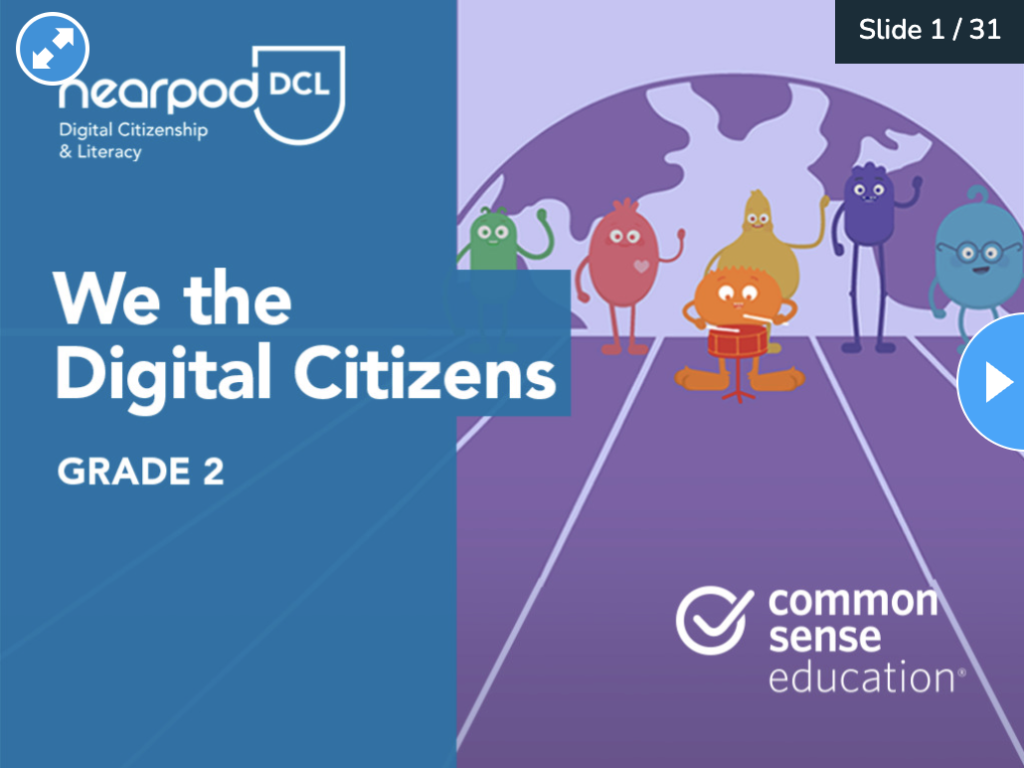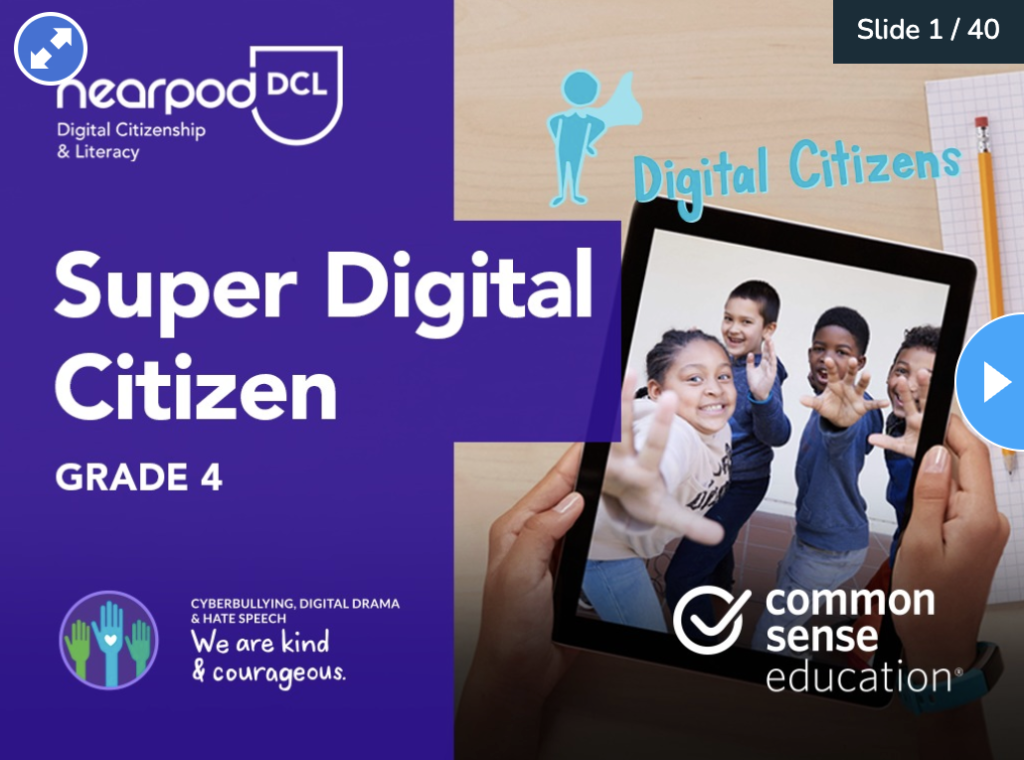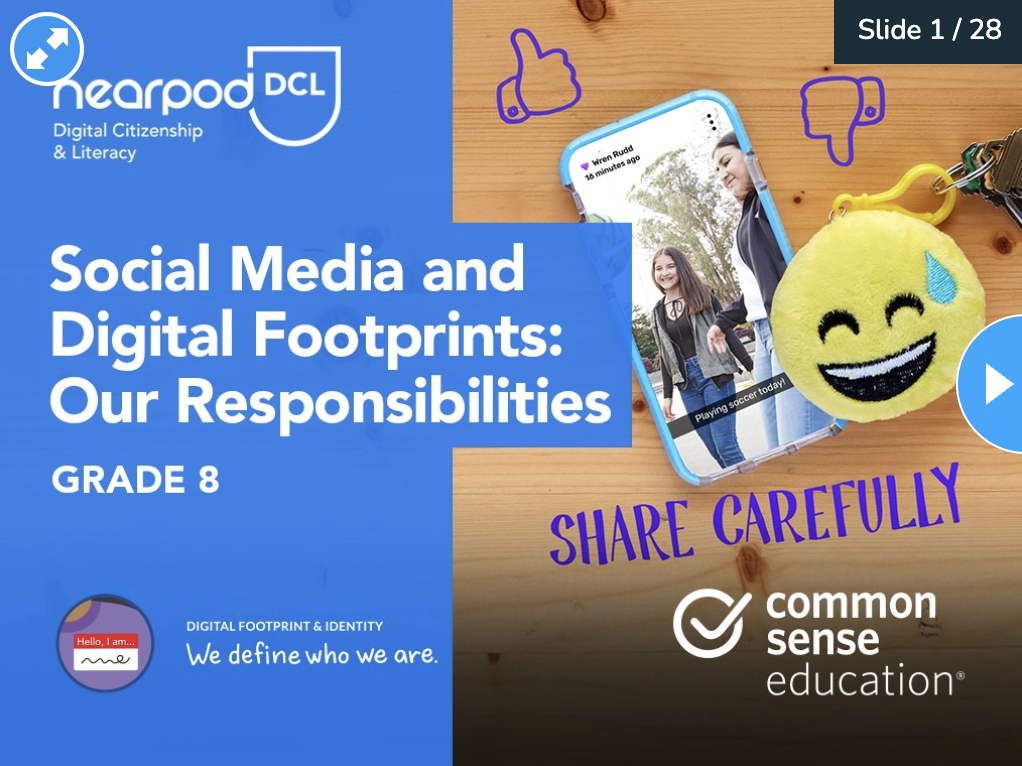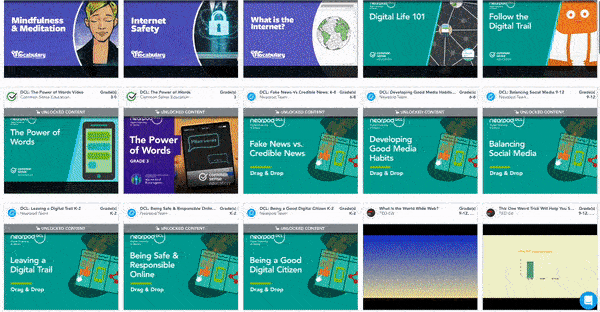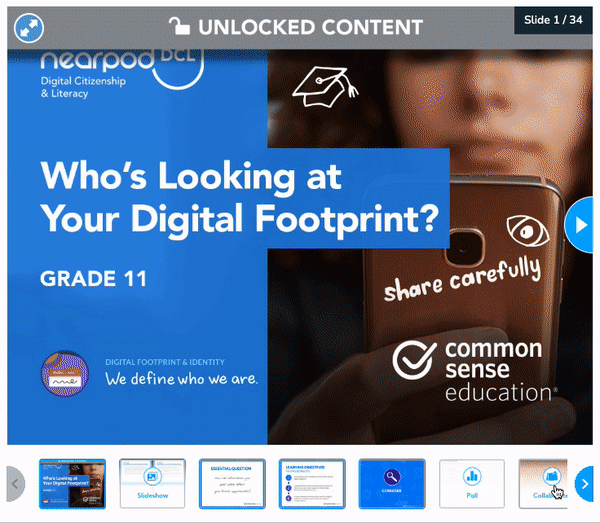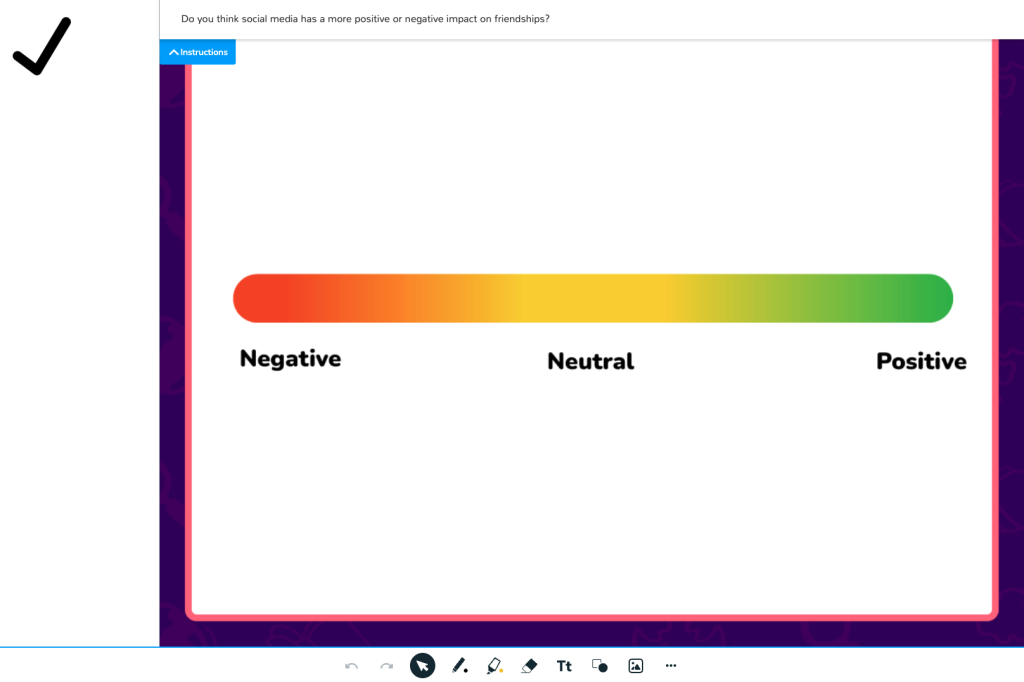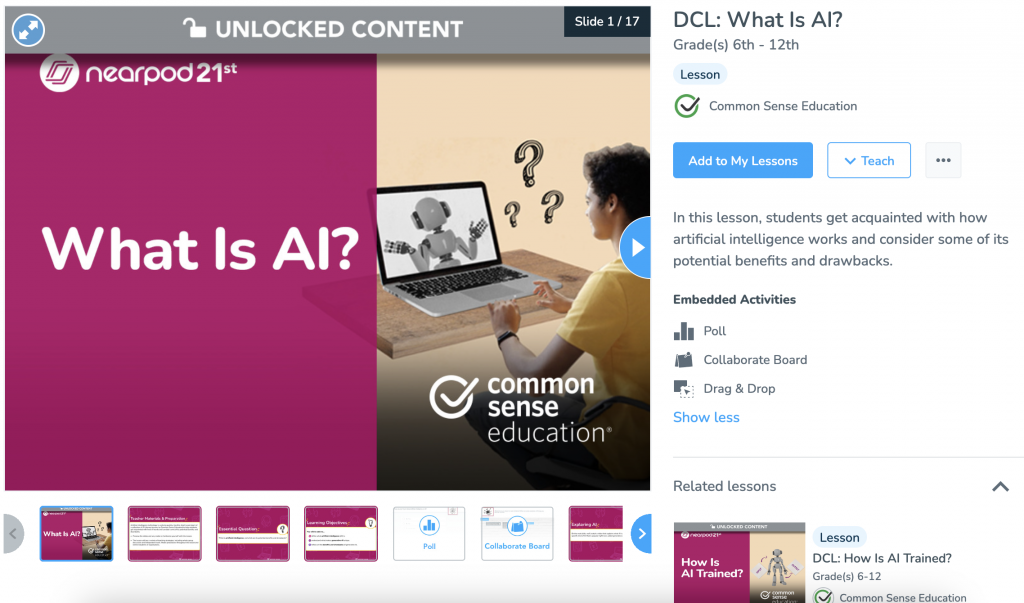
How to teach digital health and wellness to students
Digital wellness: What was once thought of as supplemental content is now becoming more recognized as a foundational set of skills that all kids—and adults—need today to thrive in our digital world. What is digital health and wellness? Digital wellness, or digital wellbeing, refers to a healthy state of balance in one’s relationship with technology. And nowadays, schools are hungry to adopt curricula and resources to teach digital wellness skills and habits of mind to all students, from kindergarten through high school.
From daily digital habits around screen time to how we nurture our relationships with those we know IRL (in real life) or just online, to ensuring our privacy and safety, to having a critical eye when consuming media, our daily tech use has tangible effects on our mental, emotional, and physical health. While laws vary, most states nowadays have some regulation in place mandating education around media literacy, digital literacy, social media, and artificial intelligence (AI). With the increased scrutiny surrounding AI’s role in teaching and learning, more conversations are emerging about the concept of digital wellness for students.
New to Nearpod? Make sure you’re signed up to access these lessons and activities!
Teachers can sign up for free below to access and create interactive lessons. Administrators can schedule a call with an expert to unlock the full power of Nearpod and the 21st Century Readiness Program for schools and districts.
The benefits of digital wellness for kids
The benefits of striving toward digital health and wellness are plentiful and transformative for young people’s development. With a focus on intentional technology use, kids can develop a healthy sense of agency and self-awareness about their digital habits. They build emotional resilience and forge stronger peer-to-peer relationships, moving beyond the superficial connections that often characterize online interactions. Children also learn to take back control of when and where they focus their attention, leading to improved productivity and deeper engagement with both digital and offline activities. Additionally, they strengthen their literacy and critical thinking skills—essential 21st-century capabilities that will serve them throughout their lives.
These benefits become even more crucial when we consider the challenges kids face in today’s digital landscape. For many years, schools have embraced teaching digital citizenship, focusing on how to be safe, responsible, and respectful online. However, as the digital world evolves rapidly, we need an expanded notion of digital wellbeing that goes beyond basic safety and online etiquette. Educators, psychologists, researchers, and parents have grown increasingly concerned about the addictive qualities of the internet and digital devices, recognizing their impact on kids’ neuroplasticity, dopamine levels, and sleep patterns. The constant exposure to curated content creates additional pressures through social comparison, which can lead to low self-esteem, anxiety, and depression.
This is why advocates push for a proactive approach—teaching these comprehensive digital wellness skills before children get online or receive their own devices, and before serious issues arise. Even as schools implement bell-to-bell phone bans, these essential life skills remain key to helping kids navigate and avoid the pitfalls of online life, including phishing, cyberbullying, plagiarism, online hate, catfishing, and misinformation. Even without phones in their pockets at school, our kids still need to learn how to thrive in today’s digital world.
Nearpod & Common Sense lessons
The Nearpod Library and 21st Century Readiness Program include interactive lessons and resources designed to set students up for success in school and life. This suite of content, available as an add-on to school and district subscriptions, focuses on timely 21st-century skill sets around AI literacy, digital citizenship, essential technology skills, coding and computational thinking, keyboarding, and more.
As part of the 21st Century Readiness Program’s digital citizenship offering, Nearpod partnered with Common Sense Education to develop media-rich “digcit” lessons that take advantage of Nearpod’s engaging interactivity. Common Sense is a nonprofit dedicated to helping families, teachers, and kids navigate the world of media through trusted ratings, reviews, and advocacy work. These digital citizenship and media literacy lessons are available for students as young as kindergarten and cover topics pertaining to:
- Healthy habits
- Privacy & safety
- Digital footprint & identity
- Relationships & communication
- Cyberbullying & online harms
- Information & media literacy
How to teach digital health and wellness to students
Let’s be clear, the digital world does offer us many advantages: access to information, global connections, countless efficiencies, creative outlets, plus exposure to different interests and points of view. And we know that knowledge is power and preparation is key! You’ve heard the countless analogies: staying balanced like surfing a digital wave; using devices in moderation like maintaining a nutritious diet; tending your digital life like a garden with consistent weeding and cultivation. Yet, we all need constant reminders of best practices and protocol to optimize our time spent online.
1. Start early!
It is never too young to start establishing healthy habits of mind when it comes to digital wellbeing for kids. Especially when it comes to screen time, kids need to begin to self-regulate when they are consuming online content and when they are investing their time in offline activities and interests. Balance takes practice and reflection! Kids also need to begin to hone their critical eye when it comes to the media they consume; the difference between what is real versus fake, fact versus opinion. The earlier we start, the stronger the foundation will be for kids staying safe, responsible, and respectful in our digital world.
Digital wellness instruction can start in pre-K and kindergarten, even before kids may be exposed to screen time or have personal devices. As a teacher, you can engage your students with grade-appropriate messages and learning objectives that spiral and scaffold for repeated instances of practice around key concepts and domains. By also incorporating Nearpod’s dynamic interactive tools, you can ensure students stay engaged with the content as they master skills through various learning modalities with activities like Draw It, Collaborate Boards, and Time to Climb.
2. Weave throughout the curriculum
No longer “just” the responsibility of a media specialist, digital wellness skills are easy to weave throughout daily instruction, and even core curricular areas! It is helpful for kids to see how these digital skills are applicable when they are in a computer class, but also when they are researching a science report, reading an op-ed in ELA, or analyzing a primary source in social studies. No longer are these skills “just” addressed at the start of a school year as part of an acceptable use policy or during Digital Citizenship Week; these behaviors and accepted norms should be reinforced throughout the school year during a morning circle time, advisory period, extracurricular class, or after-school club.
As a fundamental aspect of developing today’s literacy skills, these digital health and wellness examples from Nearpod take a comprehensive approach to addressing students’ academic, social, and emotional needs. All of the digital citizenship lessons are aligned to ELA Common Core standards, American Association of School Librarians, CASEL, ISTE, and TEKS, making it easy to find cross-curricular connections. Many of the lessons are available in Spanish, too. Plus, Nearpod offers professional development (PD) opportunities around digital health and wellness in the classroom to surface best practices. The digital landscape is changing so rapidly that the ways we learned to consume, create, and interact online are already outdated. Stay up–to–date by checking out opportunities like Nearpod’s monthly webinars and newsletters.
3. Take a whole-child approach
Our prefrontal cortexes (PFC) don’t fully develop until our mid-20s, and that’s why kids and teens are especially susceptible to the ups and downs of digital life. Their emotional regulation, responsible decision-making prowess, reasoning, and impulse control aren’t fully developed, which can result in some risky behaviors as well as tumultuous social situations. In considering kids’ physical and mental well-being, keep a sharp eye focused on their emotional awareness and resilience.
Nearpod offers many interactive activities to promote emotional health as part of the social and emotional learning (SEL) library resources. These 400+ lessons, videos, and activities encourage a growth mindset and lifelong learning. Nearpod’s SEL content takes a whole-child approach in education and is based on CASEL’s framework of five interconnected competencies (also known as the CASEL 5 or the CASEL Wheel): self-awareness, self-management, responsible decision-making, relationship skills, and social awareness. When we teach digital citizenship alongside SEL skills, the resulting lessons are powerful for online and offline interactions:
- Checking Our Digital Habits (grades 6-12)*: Students reflect on their daily media use to identify strategies to achieve a better balance of online and offline activities.
- Who’s Looking at Your Digital Footprint? (grade 11): In this free lesson, students look forward by creating a vignette that shows how a positive digital footprint can help them take advantage of opportunities down the road.
- Digital Friendships (grade 5)*: Students analyze online-only friendships to discuss the benefits and potential risks.
4. Focus on peer connections
Many of our students today experience some long-lasting consequences of the COVID pandemic, especially when it comes to social skills. Making new friends, nurturing friendships, and riding the ups and downs of interpersonal relationships is part of growing up. But online interactions can heighten those peaks and valleys considerably, as messages can be manipulated and misinterpreted. Now, we’re hearing more and more about the dynamics and nuances around how kids are connecting with AI chatbots. Kids’ social health is thus a key aspect of digital wellness as they continue to form their sense of self-identity, nurture connections, and build communities near and far in a safe manner.
Nearpod has many lessons that support social and emotional health through the lens of the digital world. Some lessons, like My Emotional Cup (grades 6-12)*, strive to build emotional awareness overall, while others focus on how best to deal with digital dilemmas in lessons like Digital Drama (grades 6-12)*. Then, when it comes to AI, there are several lessons that try to reveal the wizard behind the screen—so to speak—of chatbots:
- Friendships & Social Media (grades 6-8)*: Students assess how social media can help build positive relationships while avoiding distractions and peer pressure.
- AI Chatbots: Who’s Behind the Screen? (grades 6-12): In this free lesson, students unpack how AI chatbots, which mimic human interaction, can be both helpful and harmful.
- AI Chatbots & Friendships (grades 9-12)*: Students explore the idea of friendship and how human friendships are especially unique.
5. Lean into AI literacy
I’ve mentioned it before, but I find Kurweilz’s Law of Accelerating Returns so helpful in digesting just how fast the tech world is evolving around us. In short, the growth of technology is exponential, and that is why we constantly feel like we are feeding off a firehose of information that’s almost impossible to digest, never mind ingest. As educators, we need to model lifelong learning and learn alongside our kids. We need to be vulnerable and transparent about our own ups and downs in our daily interactions in the digital world so that our students will be open about their own successes and struggles too.
You can’t speak about tech evolution without addressing the white elephant of artificial intelligence (AI). Nearpod now offers educators and their students interactive lessons that focus on the basics of what AI is and how it works, so that classrooms can better debate the role of AI in learning and teaching. These materials showcase the benefits as well as the risks to encourage critical thinking around responsible AI use and AI literacy. Plus, Nearpod has integrated AI technology into the platform with AI Create to afford educators the efficiencies of artificial intelligence when it comes to modifying and creating new classroom content.
- What is AI? (grades 6-12): In this free lesson, students explore the fundamentals of artificial intelligence while examining both its advantages and potential risks.
- How is AI Trained? (grades 6-12)*: Students develop critical thinking skills for responsible AI usage by learning how artificial intelligence processes data for learning and content creation.
- Understanding AI Bias (grades 9-12)*: Students analyze AI training data to understand its impact on AI capabilities and explore strategies for minimizing algorithmic bias.
6. Encourage rest
The American Academy of Sleep Medicine (AASM) recommends that children ages 6 to 12 regularly need 9 to 12 hours of sleep. In this report, the Centers for Disease Control and Prevention (CDC) and the Maternal and Child Health Bureau (MCHB) found that “34.1% of children, 74.6% of high schoolers, and 32.5% of adults fail to get a sufficient duration of sleep on a regular basis, making sleep duration an important target for health improvement.” What many of us fail to realize is how many kids fall victim to the “pull of the screen” after hours, and stay online binge-watching series or doomscrolling on social media. Our devices emit blue light, which interrupts our circadian rhythms, leading to less melatonin production and therefore less sound sleep.
Digital health and wellness emphasize the impact that our digital lives have on our physical and mental wellness. Nearpod offers a topic bundle on life skills topics like The Importance of Sleep* for all grade bands (K-2, 3-5, 6-8, 9-12) as part of the 21st-Century Readiness Program. This program provides teachers and classrooms with a single solution for incorporating topics like artificial intelligence, digital citizenship, SEL, financial literacy, and more into everyday instruction. These lessons complement core curricular areas while engaging critical thinking and problem-solving skills that will serve students well beyond their school days.
*These lessons are only available for School & District licenses with access to Nearpod’s 21st Century Readiness Program. Schedule a call to learn more.
Bring Nearpod to your school
While our school days are packed with instruction, Nearpod makes it easy to take a standards-based approach to weaving digital wellness into daily teaching. These lessons underscore fundamental learning objectives that support not only today’s literacy skills but also 21st-century skills around critical thinking, problem solving, collaboration, and creativity. And let’s not forget how digital wellness supports our students’ overall social and emotional health. If your school hasn’t yet started supporting students’ digital wellness, dip a toe in during October’s Digital Citizenship Week. Then, garner community support for a more thoughtful, yearlong integration of digital wellness to continue creating a positive school culture. Digital wellness is all about building students’ sense of agency and self-efficacy, which helps create lifelong learners.
New to Nearpod? Make sure you’re signed up to access these lessons and activities!
Teachers can sign up for free below to access and create interactive lessons. Administrators can schedule a call with an expert to unlock the full power of Nearpod and the 21st Century Readiness Program for schools and districts.
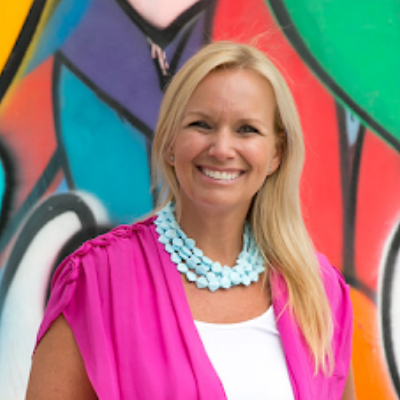
Darri Stephens is a dedicated LX (learning experience) designer, passionate about creating quality content and programs for kids, families, and educators. With MAs in Education from both Harvard and Stanford, and work experience at best-in-class ed tech organizations including Wonder Workshop, Nickelodeon, and Common Sense Education, she is steeped in the design thinking process and committed to agile and iterative project management, which has resulted in multi-award-winning programs and products.
